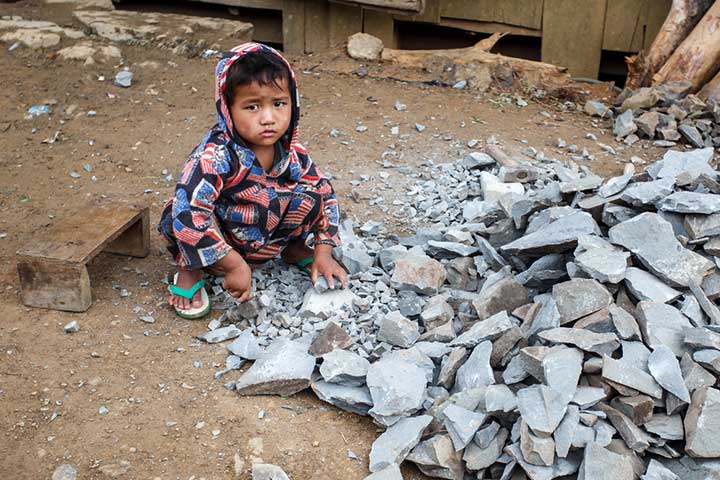
On a scale of 1-10, how appealing is a shimmery, iridescent eyeshadow makeup palette for you and the desire to own it? With constant advertising of body shimmers, glitter and other sparkly powders, it is sometimes hard to scrutinise or be concerned enough to dig deep into what goes on behind the closed doors of your favourite Sephora or Ulta-bought products.
Sadly, I was one of those people who felt indifferent to that concern, even after being with this industry that I cared and loved for so much. And that brings me to a hard-hitting video by Refinery29 that highlights the poorest region in India with the highest mining of mica.
What is mica and why is it a big deal?
Mica is a naturally occurring silicate mineral. The ground of this mineral is the sparkling powder that can be found in almost any and every beauty product, including makeup, nowadays. The Food and Drug Administration (FDA) lists mica as a substance that is exempt from certification. While mica is safe for use in makeup products and the cosmetics industry, it’s unethical sourced ways is what hits the closest to home.
So, what seems to be the problem with my makeup?
Mica’s shimmery and sparkling appeal is drawn from the fact that is a naturally produced substance found in the deep mines of the Earth with no real side-effects or problems to anyone who uses the powder found in these beauty products. Seems perfectly normal right? Wrong. Mining mica is a dark and tragic story—one that includes widespread child labour in Jharkhand, India.
The hard-hitting truth
Having the largest deposits of mica in the world, Jharkhand is directly linked to labour due to its high demand in the cosmetics industry. It makes toothpaste look extra bright, it provides shimmer and radiance to your favourite tinted BB cream, and so on… but the ugly truth is that all the glitz and glam comes at a cost.
Since 60% of the industry relies on mica, multiple brands source this mineral that is readily available deep down in the mines. And because those mines are tiny, dingy and cramped, only a child-sized labourer could get access to it. Children from the ages of 8 and 12 years continue to slave in these dangerous mines (where any piece of debris could end their life) for the smallest of wages, just to give back to a community that makes sparkly products.
Watch the ‘shady’ video below to see and learn more about mica and makeup:
If this doesn’t hit home, I don’t know what will. I only hope brands and companies get more aware and look towards another solution and source for this mineral.
I’d love to know what you think. Share your thoughts below!

